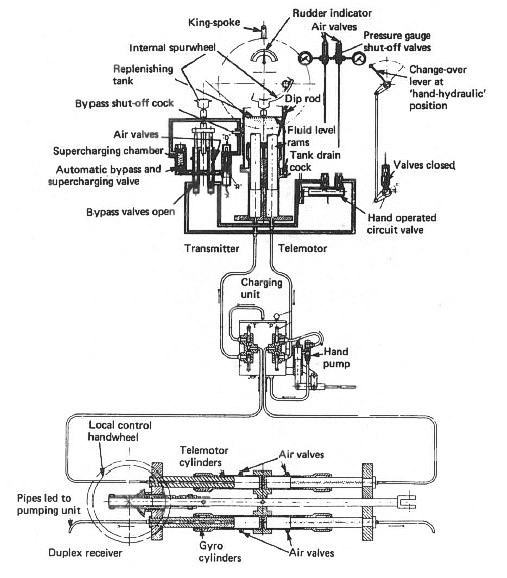
Telemotor Control for Ships Steering Gear
The steering gear provides a movement of the rudder in response to a
signal from the bridge. The total system may be considered made up of
three parts, control equipment, a power unit and a transmission to the rudder
stock. The control equipment conveys a signal of desired rudder angle
from the bridge and activates the power unit and transmission system
until the desired angle is reached.
The power unit provides the force, when required and with immediate effect, to move the rudder to the desired angle. The transmission system, the steering gear, is the means by which the movement of the rudder is accomplished.
The power unit provides the force, when required and with immediate effect, to move the rudder to the desired angle. The transmission system, the steering gear, is the means by which the movement of the rudder is accomplished.


